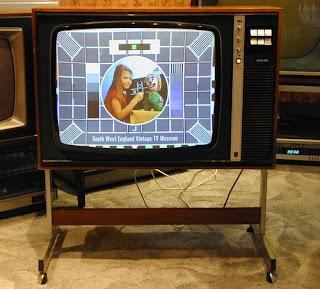One technology trend that's garnering a lot of attention is additive manufacturing, or as we know it, 3D printing. The technology promises so much - build anything that you can create a blueprint for. It's going to be huge for industry and for the home user alike.
So many good points but what about the downside?
Let me know what you think about my words of caution.
 |
| Attention: new technology ahead |
The hardware needed for 3D printing is early generation, sometime prototype level. For any company investing in these machines there's a definite risk that the printers will quickly be superceded by faster, more powerful, more versatile models. It would be fair to say that 3D printing on a commercial scale is not there yet.
Similarly for the domestic consumer, the models that you may want to spend your money on are simply way too s-l-o-w for anything more than a hobbyist at this stage.
Buy this hardware now and the chances are you will be looking to re-invest in the not too distant future.
Guns, drugs and bad behaviour
Unlike most of the other technology trends that are portrayed in a good light, 3D printing has been villified by politicians because it takes away their control of what happens within their borders. There are big concerns that we will see the unlicensed, uncontrolled manufacture of weapons, ammunition and other harbingers of death.
Physical borders have always acted as the last defence to keep out unwelcome imports but when the ability to manufacture that restricted product from a blueprint that came down an internet connection, what hope is there for any kind of control?
The ability to print drugs (given the right ingredients) also sounds warning bells for border control.
Humans are surplus to requirements
Additive manufacturing may become so widespread that the entire fabrication process for virtually any product will be handled exclusively by industrial robots.
If the industrialists of the world invest in the machines over people, what is there left for humans to do in this traditionally labour-intensive industry?
What will happen to the traditional assembly line worker? What need is there for the component suppliers when the one factory can make all of the parts themselves. Why would we need the service industries that feed the factories?
Developing nations are hard hit
So much of the world's manufacturing has already shifted to the places where human labour is cheap - South-east Asia and South America.
If you no longer need huge numbers of people to work for peanuts but instead need a battery of high tech robots to replace them, what happens to all of those disenfranchised people? How do they find a living?
Idle hands
My biggest concern with the potential shift in manufacturing processes is the human toll of lost work. It will hit every nation on earth, some harder than others. It has the potential, if left unchecked, to make people surplus to requirements in the manufacturing world.
We are already seeing the fall-out from mass unemployment in the bankrupt European Community states. Civil unrest, riots, crime, lives ruined.
Scale this up to a world where manufacturing has dispensed with human involvement and there are countless numbers of angry and hungry people. They no longer buy anything because they have no money, they no longer pay taxes because they are not earning.
Where will governments source their funds when the tax system has collapsed?
These are big questions for our leaders and for ourselves. What will we do to address them and will we do it in time?







































